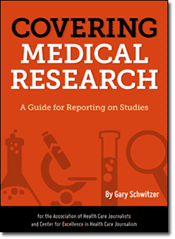Tag
concussions
-
Tip sheet provides pointers on concussion-related testing and other concussion research resources
In what seems to be an eternity ago, I wrote about a pair of studies on concussions for Scientific American.…

-
Covering sports concussions: Some takeaways from the #AHCJ16 panel
Conversations about concussions, traumatic brain injury and chronic traumatic encephalopathy (CTE) have become more common in recent years as many…

-
Making the most of medical research sessions at #AHCJ16
Each year, the AHCJ conference includes a smorgasbord of opportunities to inform and enhance journalists’ knowledge and reporting. Topics include…

-
•
As Tenn. lags in youth sports concussion laws, reporter shows delay taking a toll
The Tennesean‘s Nate Rau becomes the leader in the clubhouse for 2012’s “most viscerally disquieting use of a verb” award…

-
New health-related state laws for 2011
Many thanks to Melissa Preddy for pointing out, in a post on the Reynolds Center’s businessjournalism.org, the National Conference of…

-
•
Researchers surprised by concussion study
Writing for Sports Illustrated, David Epstein tells the story of a small-scale Indiana football concussion study in which in which…

-
•
As school starts, so do youth sports injuries
The University of Michigan’s new Michigan NeuroSport Concussion Program seems to be cropping up everywhere, and as far as I…

-
•
Concussion-related trauma masquerades as ALS
The New York Times‘ Alan Schwarz reports on what he says is “the first firm pathological indications that brain trauma…

-
•
Tougher concussion rules from high school assn.
The National Federation of State High School Associations has released tougher rules about removing players with potential concussions from the…

-
•
NFL to post concussion warning in locker rooms
In The New York Times, football concussion reporter Alan Schwarz examines the content and ramifications of a new warning poster…




